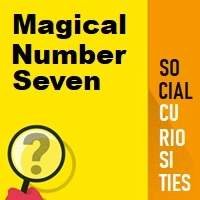
The Magical Number Seven experiment
Frequently referred to as “Miller’s Law,” the Magical Number Seven experiment purports that the number of objects an average human can hold in working memory is seven plus or minus two.
What this means is that the human memory capacity typically includes strings of words or concepts ranging from 5-9. This information on the limits to the capacity for processing information became one of the most highly cited papers in psychology.
The Magical Number Seven Experiment was published in 1956 by cognitive psychologist George A. Miller of Princeton University’s Department of Psychology in Psychological Review. In the article, Miller discussed a concurrence between the limits of one-dimensional absolute judgment and the limits of short-term memory.
The number of objects an average person can hold in working memory is about seven, also known as The Magical Number Seven, Plus or Minus Two.
Miller’s Law
In a one-dimensional absolute-judgment task, a person is presented with a number of stimuli that vary on one dimension (such as 10 different tones varying only in pitch) and responds to each stimulus with a corresponding response (learned before).
Performance is almost perfect up to five or six different stimuli but declines as the number of different stimuli is increased. Number 7 is therefore called the Magic number.
Seven (plus or minus 2) is a way of grouping content so that it could be organized better for human comprehension.


